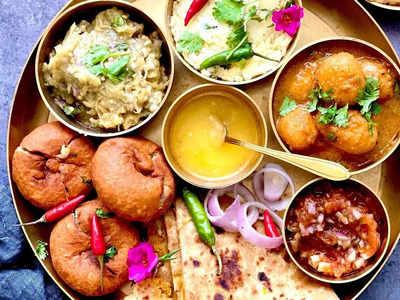November 25, 2023
November 17, 2023

Introduction:
Chhath Puja, a four-day Hindu festival dedicated to the worship of the Sun God, holds a special place in the hearts of people in the Indian states of Bihar, Jharkhand, Uttar Pradesh and parts of Nepal. Rooted in ancient traditions, Chhath Puja is not only a time for spiritual reflection but also a celebration of culinary delights that are an integral part of the festivities.
Day 1: Nahay Khay (The Bath and Feast):
Chhath Puja commences with Nahay Khay, a day that begins with devotees taking a holy dip in rivers, ponds, or other water bodies before sunrise. This ritual purification symbolizes the cleansing of the body and soul. Following the dip, a special meal known as “Nahay Khay” is consumed. This meal is characterized by its simplicity and purity, aligning with the satvik principles of Hinduism. Kheer, a sweet rice pudding, is a common dish on this day, along with puris (fried bread) and an assortment of fresh fruits.
The emphasis on cleanliness and simplicity in Nahay Khay signifies the start of a spiritually charged festival, preparing devotees for the days of fasting and devotion that lie ahead.
Day 2: Kharna (The Fasting Day Feast):
The second day of Chhath Puja is observed as Kharna, during which devotees undertake a day-long fast. The fast is broken in the evening after sunset, following a set of rituals. The Kharna meal, like the Nahay Khay meal, is simple yet nourishing. Devotees consume kheer, thekua (a sweet made of wheat and jaggery), bananas, and coconut.
The ingredients chosen for the Kharna meal are carefully selected to provide sustained energy throughout the night, ensuring that devotees can endure the rigors of the fast. The thekua, in particular, is a beloved sweet that adds a traditional touch to the culinary aspect of Chhath Puja.
Day 3: Sandhya Arghya (Evening Offerings):
Sandhya Arghya, the third day of Chhath Puja, is the main day of worship when devotees offer prayers to the setting sun. This evening is marked by a rich array of traditional foods prepared with love and devotion. The thekua, puris, and an assortment of fruits become offerings to the Sun God.
The atmosphere is charged with spirituality, and the aroma of these traditional dishes adds to the festive ambiance. Families come together to perform rituals and share these special foods, creating a sense of unity and togetherness.
Day 4: Usha Arghya (Morning Offerings):
The final day of Chhath Puja, Usha Arghya, is dedicated to offering prayers to the rising sun. Devotees wake up early to prepare a special morning meal for the Sun God. This meal includes a variety of seasonal fruits, thekua, and Chhath Puja ke laddu, a special sweet made with roasted gram flour, jaggery, and ghee.
Chhath Puja ke laddu holds a significant place in the culinary celebrations, symbolizing the culmination of the festival. The preparation of these laddus is a meticulous process, and the end result is a sweet that not only delights the taste buds but also carries the essence of tradition.
Conclusion:
Chhath Puja is not just a religious observance but a vibrant celebration that encompasses spirituality, tradition, and culinary richness. The traditional foods associated with each day of the festival are more than just sustenance; they are a cultural legacy passed down through generations. As families gather to perform rituals and share these special meals, Chhath Puja becomes a time of bonding and festivity, strengthening the cultural fabric of the communities that observe it. In essence, the culinary journey of Chhath Puja is a testament to the rich tapestry of traditions that define this auspicious celebration.
Food Blog
By Vishesh Singh

















